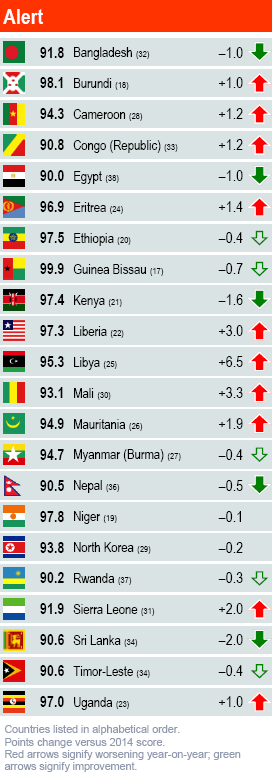BY PATRICIA TAFT AND KENDALL LAWRENCE
 Long considered an anchor of relative stability in East Africa, Kenya is considered to be one of the strongest emerging markets in Africa. Despite significant pressures, their economy continues impressive growth, with the World Bank projecting continued gains over the next few years. Kenya has also made significant gains in the technology sector, leading the region – and in some cases, the continent – in the development and deployment of mobile banking and telecommunications platforms.
Long considered an anchor of relative stability in East Africa, Kenya is considered to be one of the strongest emerging markets in Africa. Despite significant pressures, their economy continues impressive growth, with the World Bank projecting continued gains over the next few years. Kenya has also made significant gains in the technology sector, leading the region – and in some cases, the continent – in the development and deployment of mobile banking and telecommunications platforms.
Kenya also benefits from a highly educated and productive young population, although issues of youth unemployment and disenfranchisement remain in some parts of the country. The cycle of violence that plagued Kenya following the 2007 elections has also abated, although whether historical issues of Group Grievance are being effectively addressed at all levels of society over the longer term remains to be seen.
Additionally, Kenya is an example of a country that is plagued by severe outside pressures stemming from the instability of its neighbors. The most consistent, highly publicized threats emanate from one of the Index’s most consistently fragile states, Somalia. Kenya has been the recipient of unrelenting attacks from the Somalia-based al-Shabaab, a designated terrorist group with ties to al-Qaeda, for several years now, including throughout 2014. These attacks continue to effect Kenya across multiple indicators, from the status of the Security Apparatus to Human Rights and the Rule of Law. Kenya is also host to one of the largest refugee populations in the world, totaling over 500,000 in 2014 alone. The refugee crisis, which stems from instability not only in Somalia but also South Sudan, D.R. Congo, and Ethiopia, puts immense pressure on Kenya’s Public Services and also affects its Demographic Pressures scores.
To be sure, over the past ten years and particularly following the post-election violence of 2008, Kenya has developed legislation and policies that are intended to address both domestic and external pressures. Kenya’s new constitution, promulgated in 2010, calls for the devolution of power away from the central government in Nairobi to 47 counties throughout the country. The adoption and implementation of a series of international recommendations meant to address the deep societal grievances that not only led to the explosion of violence in 2008, but also years of conflict and unrest, have also been ongoing. While these reforms are no doubt both progressive and needed, the process of implementation and incorporation at the local level remains slow and uneven. Like most other countries on the Index, Kenya is not monolithic and pressures vary widely from region to region. Given this reality, for legislative and policy changes to have true impact, a stronger focus on implementation at the grassroots level is required.
Finally, Kenya has long had a vibrant civil society that has been fundamental in the post-colonial evolution of the country. Serious concerns over the freedom of Kenyan civil society and the national press have been raised over the past several years and deserve continued attention if the country’s impressive economic gains are to be matched with similar progress across its social and political indicators.
